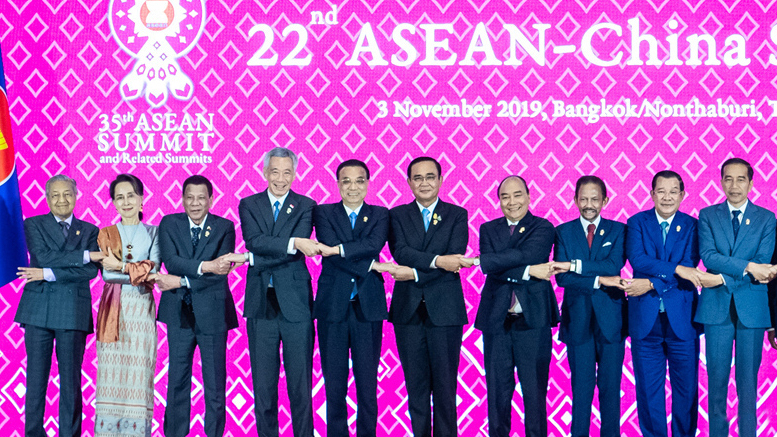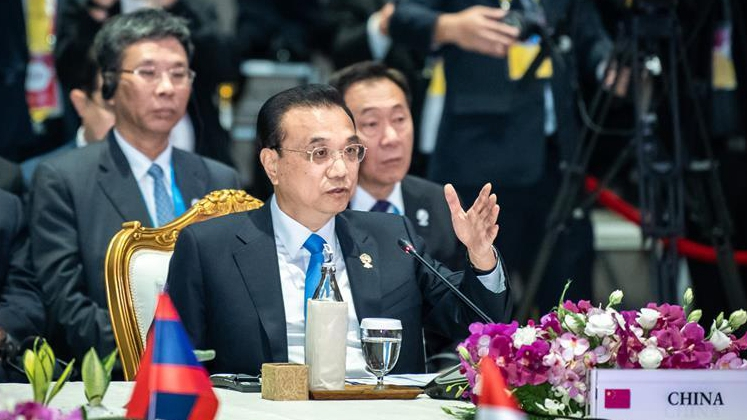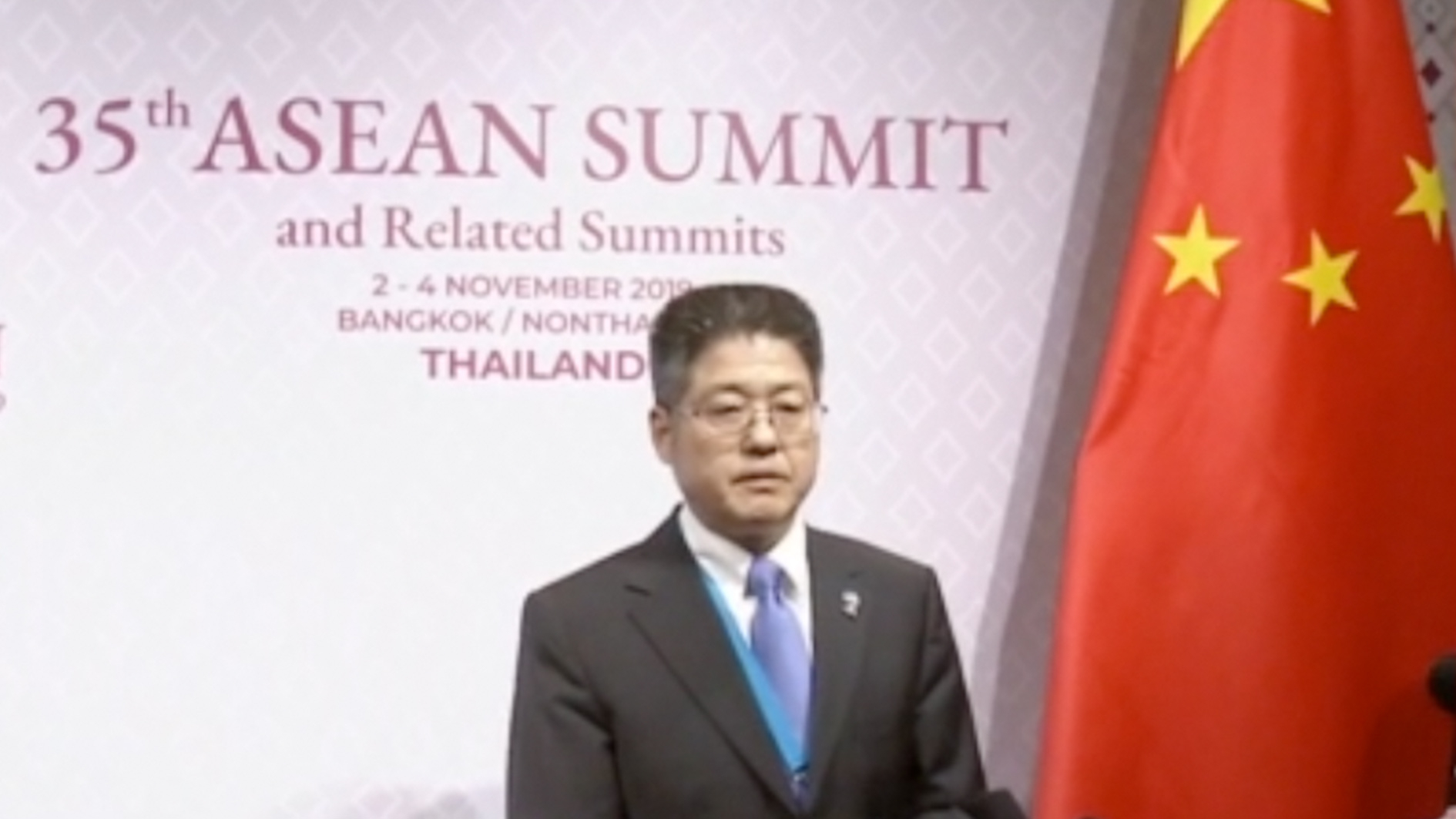01:06

Amid a chant of achievements made in regional development and connectivity, the 22nd China and the Association of Southeast Asian Nations (ASEAN) leaders' meeting drew to an end in Bangkok on Sunday. Consultations on the Code of Conduct (COC) in the South China Sea, as one of the major topics, drew broad concern.
The chairman's statement said that negotiations are advancing steadily with all sides agreeing to "enhance mutual trust and confidence and exercise self-restraint," but compared with the breakthrough made in Regional Comprehensive Economic Partnership (RCEP) negotiations and China's signing of bilateral agreements on Belt and Road cooperation with ASEAN member states, many still wonder what's happening next in the South China Sea.
The COC in the South China Sea, recognized as an upgraded and strengthened version of the Declaration on the Conduct of Parties in the South China Sea (DOC) signed by China and ASEAN countries in 2002, outlines the most important principles in the management of disputes on the South China Sea.
Consultations for the COC were launched by the two sides in 2013, aiming at safeguarding peace and stability in the region. The talks have been speeding up in recent years and the draft text of the COC was completed last August.
To ensure the consultations are conducted smoothly, China proposed a three-year timeline which outlines the road map of properly handling differences and reaching consensus through consultation. It has drawn a positive response from various parties.

The COC talks are moving forward based on the previously agreed three-year timeline proposed by Chinese Premier Li Keqiang at the China-ASEAN meeting last year. Given the current stable situation in the South China Sea and consensus reached in the statement, experts suggest negotiations will be held step-by-step at an accelerated pace.
The chairman's statement implied the second reading process after confirming the first reading of the negotiating text had been completed on July 31 in Thailand ahead of the schedule.
Meanwhile, Premier Li said in a signed article entitled "Working Hand in Hand for a Brighter Future of East Asian Cooperation" that the second reading "has been launched." In Sunday's meeting, he praised the stable situation in the South China Sea, hoping the second reading "would be finished by 2020."

Chinese Premier Li Keqiang addresses the 22nd China-ASEAN (10+1) leaders' meeting in Bangkok, Thailand, November 3, 2019. /Xinhua Photo
Chinese Premier Li Keqiang addresses the 22nd China-ASEAN (10+1) leaders' meeting in Bangkok, Thailand, November 3, 2019. /Xinhua Photo
Despite that details on the second reading remain unknown, given the statement said it has tasked ministers and senior officials to strive for further progress toward the conclusion of the COC, ministerial meetings on the COC may be held in the future.
Chinese Ambassador to ASEAN Huang Xilian held an optimistic view on the consultation progress, saying China's relations with ASEAN "have reached a new high." The two sides "have quickened the pace in cooperation on politics and security," he added.
Huang mentioned the joint naval exercise held in April this year as an indication of the close ties. With a sound momentum of the situation in the South China Sea, he believes that the two sides can properly handle differences and accelerate the consultations on the COC in the South China Sea with joint efforts.
Despite Huang's optimistic remarks, obstacles still exist. The ambassador believed that the key to solving the South China Sea issue is to enhance maritime cooperation and properly handle the differences within the region, "but on top of it all, we have to avoid interference from non-regional countries," stressed Huang.
His words were echoed by Chinese Vice Foreign Minister Le Yucheng who said Monday after the 14th East Asia Summit that it was unacceptable for countries from outside the region "to make waves, escalate disputes and create tensions."

Chinese Vice Foreign Minister Le Yucheng speaks after attending the 14th East Asia Summit, Bangkok, Thailand, November 4, 2019. /CGTN Photo
Chinese Vice Foreign Minister Le Yucheng speaks after attending the 14th East Asia Summit, Bangkok, Thailand, November 4, 2019. /CGTN Photo
The vice foreign minister urged non-regional countries to respect the efforts of regional countries in maintaining peace and stability in the South China Sea and stop meddling in regional affairs, referring to the remarks made by a U.S. envoy which denounced Chinese "intimidation" in the South China Sea.
Le said the comments were "neither constructive nor responsible," alerting that the words attempt to drive a wedge between China and other regional countries.
Regarding the external interference on the South China Sea issues, Chen Xiangmiao, a research fellow at the Hainan-based National Institute for the South China Sea, suggested that the COC effectively restricts countries from outside the South China Sea from meddling in regional issues, thus, concluding the consultation at an early date would help facilitate long-term peace and stability in the region.
As Premier Li said when speaking of the future ties between China and ASEAN as well as the prospect of the COC in the South China Sea, all sides should resist disruptions, meet each other halfway and sustain regional peace and stability jointly.